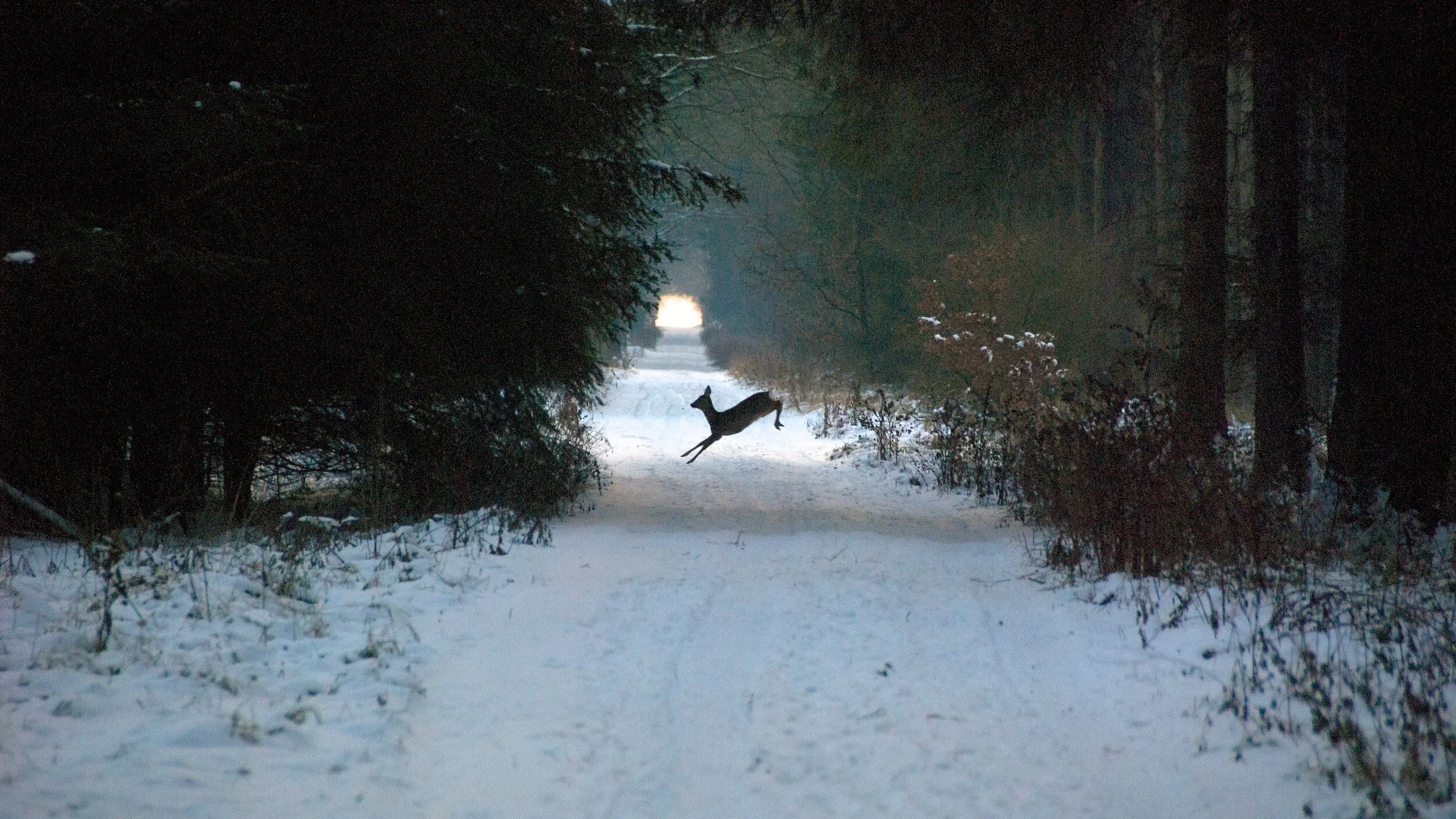Blindness While Driving
By Kim Jirik
A few years ago, I was lucky enough to become the owner of a brand new Honda CR-V. It was late fall, and I was heading home from work at dusk, still enjoying the new car smell. I failed to notice the deer, which blended perfectly with the brown vegetation on the side of the road - until it began to move. It ran straight at my car as I hurriedly applied the brakes, but my efforts were too late. I hit the deer with my front bumper, and watched as the deer slid down the full length of my car, denting the entirety of the driver’s side.
Types of Blindness
Why did I fail to see the deer on a road that I was so familiar with? One reason is that I may have fallen victim to change blindness, which means that I basically did not notice the change in the visual stimuli around me as I was driving (Brady, et al., 2009). A study by Simons and Ambinder (2005) indicated that approximately 50% of people fail to notice a change in stimulus, even a change in the person to whom they were talking. Check out The Door Study if you have not seen it. It is a perfect example of how we fail to notice changes around us, especially when we are paying attention to something specific. There are many possible reasons why we may miss these changes in visual stimuli. It could be as simple as our attention being diverted from the change signal (the thing that wasn’t changing), or we may not have noticed the visual information at all because we felt it was unimportant. What we fail to notice, we fail to attend to. It is also important to point out that we can NEVER pay attention to everything in our environment. We have what is known as a limited capacity of attention and memory. Think of a cup. It can only be filled to its limit and once this is met, the liquid begins spilling over. Like spilling a drink, in our minds, things get missed due to this completely normal limitation. Because we can only process one stream of information at a time, we will perceive only what our attention is focused on (Simons, 2020). Paying attention to something so closely, like other cars and what is in front of you while driving, means that you may become blind to unexpected stimuli. Working memory may play a part in this, as those with greater working memory capacity are able to focus more specifically on the primary task at hand, such as driving and keeping the car on the road, making them less likely to notice other stimuli.
What Does Overconfidence Have To Do With It?
You may now be thinking that you would never fall victim to either of these types of blindness while driving, but the chances are, you likely would. Overconfidence in one’s own ability to either detect changes in the environment or to automatically notice important stimuli is widespread. A study by Levin and Angelone (2008) indicated that 90% of people surveyed felt that they would notice irrelevant stimuli, such as a deer standing on the side of the road, but when tested, less than half picked out these types of changes in their environment. What this study ,and many like it, has pointed out is that our ability to notices changes or new stimuli is actually far less than we assume.
How To Be Less Blind
So what can we do to mitigate some of this blindness to what goes on around us? First of all, although we can’t really train ourselves to detect stimulus changes, we can increase our awareness of our visual limitations. This may help us avoid distracting behaviors, like searching radio stations or glancing a peak at the sunset. Secondly, maximize the attention paid to the task at hand, especially in situations when the results of your blindness may be tragic. Finally, don’t assume that others are paying equal attention. You need to pay attention to them.
Did I mention that I just replaced my old CR-V, dubbed the deer magnet? I am now the proud owner of a 2020 CR-V with under four hundred miles. My goal is to maximize attention each time I take it down the road, hoping that “blindness” will not take this one out.
References
Brady, T. F., Konkle, T., Olivia, A., & Alvarez, G. A. (2009). Detecting change in real-world objects: The relationship between visual long-term memory and change blindness. Communicative & Integrative Biology, 2(1), 1-3. doi.org/10.4161/cib.2.1.7297
Levin, D. T., & Angelone, B. L. (2008). The Visual Metacognition Questionnaire: A measure of intuitions about vision. The American Journal of Psychology, 121(3), 451–472. https://doi.org/10.2307/20445476
Simons, D. J., & Ambinder, M. S. (2005). Change blindness: Theory and consequences. Current Directions in Psychological Science, 12(1), 44-48. doi.org/10.1111/j.0963-7214.2005.00332.x
Simons, D.J. (2010, March 13). The “Door” Study [Video]. YouTube. https://www.youtube.com/watch?v=FWSxSQsspiQ
Simons, D.J. (2020). Failures of awareness: the case of inattentional blindness. Noba textbook Series: Psychology. Champaign, IL: DEF Publishers. https://nobaproject.com/modules/failures-of-awareness-the-case-of-inattentional-blindness
